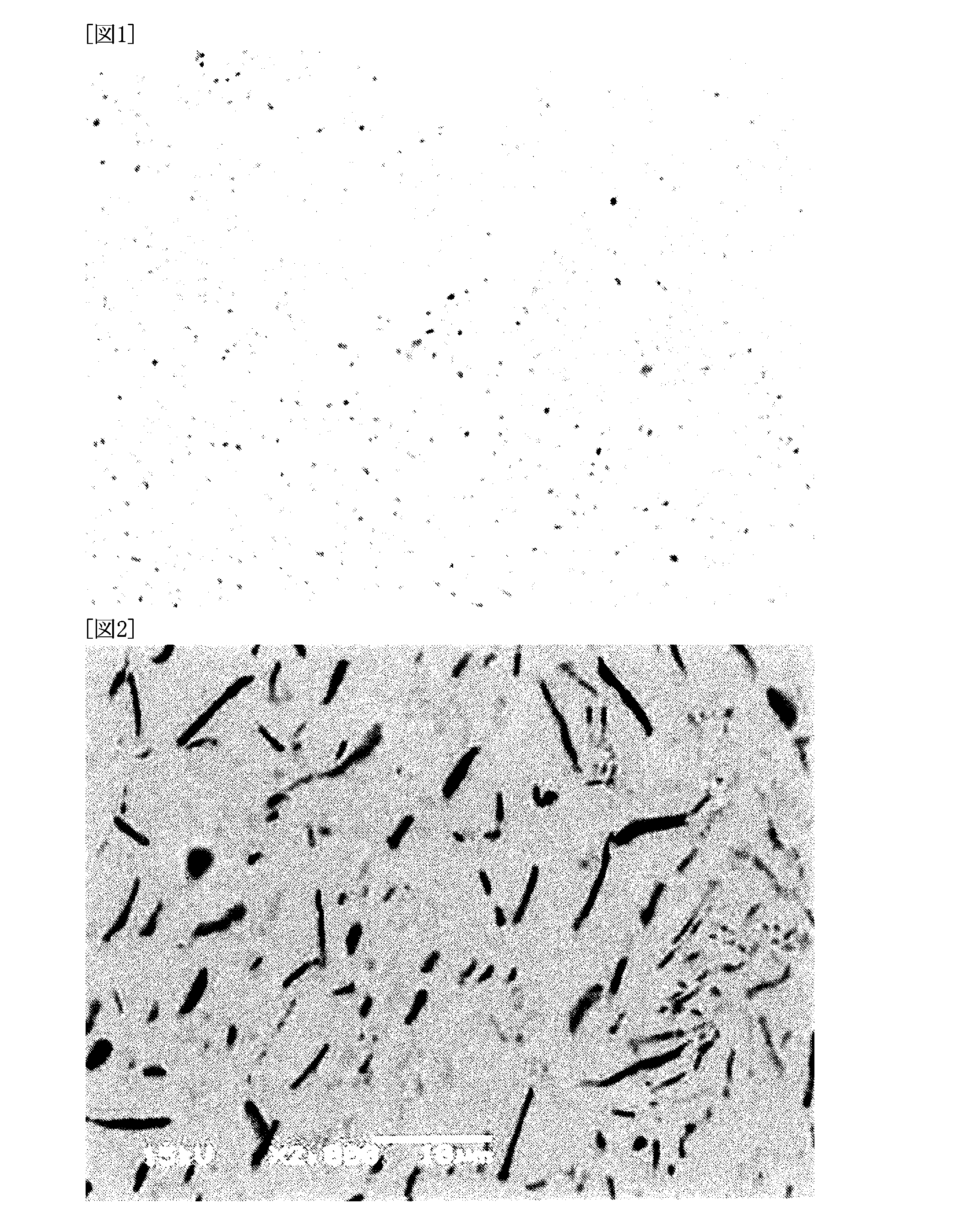Lead-free solder paste
a lead-free, solder paste technology, applied in the direction of welding/cutting media/materials, manufacturing tools, solventing apparatus, etc., can solve the problems of significant reduction of the joint increase of manufacturing costs, and decrease of the strength of the solder, so as to increase the bonding strength of the resultant solder joint
- Summary
- Abstract
- Description
- Claims
- Application Information
AI Technical Summary
Benefits of technology
Problems solved by technology
Method used
Image
Examples
example i
[0044]A flux having the following composition was used in examples of the present invention and in comparative examples:
[0045]42 mass % of modified rosin,
[0046]6 mass % of isocyanuric acid tris(2,3-dibromopropyl)ether,
[0047]3 mass % of 2,3-hydroxybenzoic acid,
[0048]8 mass % of diphenylguanidine,
[0049]7 mass % of hydrogenated castor oil, and
[0050]34 mass % of diethylene glycol monohexyl ether.
[0051]Using the above-described flux, solder pastes were prepared and their properties were compared. Each solder pastes was prepared by charging a stirred vessel with a solder powder, a flux, and a dispersion containing nanoparticles followed by mixing. The compositions of the solder pastes of the examples and the comparative examples were as follows.
Example (1)
[0052]88.5 mass % of Sn-9Zn solder powder (20-40 μm),
[0053]0.2 mass % (0.08 mass % as Cu) of a 40% dispersion of 300 nm Cu particles in diethylene glycol monohexyl ether, and
[0054]11.3 mass % of flux.
Example (2)
[0055]88.5 mass % of Sn-9Z...
example ii
[0091]Nanoparticles which were stored by the below-described methods were mixed with a solder powder and a flux to prepare solder pastes. The solder pastes were tested by a solder ball test, and the solder balls formed at the time of heating were compared.
[0092]The flux used in this test was that used in Example I, and the compositions of the solder pastes were such that the Cu content of each of the examples and comparative examples was 0.08 mass %.
Example (1)
[0093]88.5 mass % of Sn-3Bi-8Zn solder powder (20-40 μm),
[0094]0.2 mass % (0.08 mass % as Cu) of a 40% dispersion of 20 nm Cu particles in diethylene glycol monohexyl ether, and
[0095]11.3 mass % of flux.
example
(2)
[0096]88.5 mass % of Sn-3Bi-8Zn solder powder (20-40 μm),
[0097]0.2 mass % (0.08 mass % as Cu) of a 40% dispersion of 20 nm Cu particles in α-terpineol, and
[0098]11.3 mass % of flux.
Comparative Example (1)
Cu Particles Stored in Nitrogen was Directly Mixed with Solder Powder
[0099]88.5 mass % of Sn-3Bi-8Zn solder powder (20-40 μm),
[0100]0.08 mass % of powder of 20 nm Cu particles (stored in nitrogen), and
[0101]11.42 mass % of flux.
PUM
| Property | Measurement | Unit |
|---|---|---|
| particle diameter | aaaaa | aaaaa |
| melting point | aaaaa | aaaaa |
| melting point | aaaaa | aaaaa |
Abstract
Description
Claims
Application Information
 Login to View More
Login to View More - R&D
- Intellectual Property
- Life Sciences
- Materials
- Tech Scout
- Unparalleled Data Quality
- Higher Quality Content
- 60% Fewer Hallucinations
Browse by: Latest US Patents, China's latest patents, Technical Efficacy Thesaurus, Application Domain, Technology Topic, Popular Technical Reports.
© 2025 PatSnap. All rights reserved.Legal|Privacy policy|Modern Slavery Act Transparency Statement|Sitemap|About US| Contact US: help@patsnap.com

